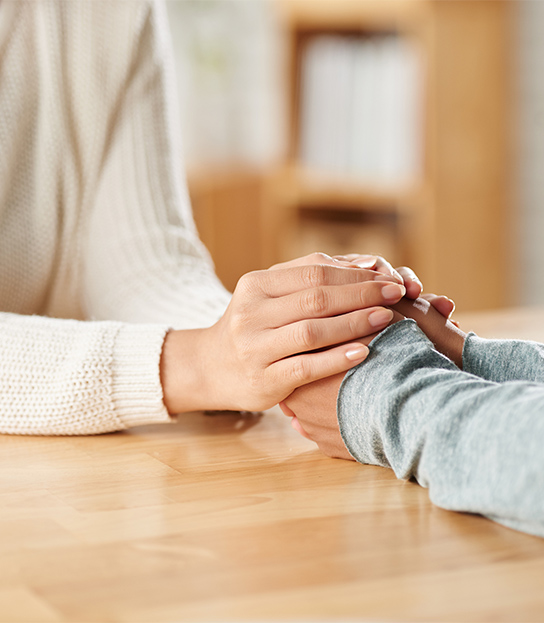

A 2012 survey found that an estimated 2.1 million residents in the United States abuse prescription opioids. About 467,000 U.S. citizens were addicted to heroin. The consequences of this epidemic have been dire. In fact, the number of deaths caused by unintentional overdose of prescription pain relievers has more than quadrupled since 1999.
Opioids reportedly account the largest proportion of prescription drug problems based on rates of abuse and mortality. Deaths caused by opiates were on the rise in the beginning of the 21st century, to the point that the number of death certificates that listed opioid analgesics as a cause of death outnumbered cocaine and heroin by 2002.
Path to Addiction
Much of opiate addiction begins as a means of managing symptoms of pain. However, prescription opiates present an intrinsic abuse factor as they work on the same brain systems and chemicals as heroin and morphine. This can progress further when people begin using their prescription opiates for non-medial purposes, achieving a characteristic high, which is expedited by crushing pills into a powder and snorting or injecting it.
Alternately, in some cases of opiate addiction, people take the prescriptions for their intended purpose but fail to take them as instructed by their doctor. For example, they may assume that the pills aren’t working properly and take more at once to compensate, taking them more frequently, or combining the pills with other medications.
There are several factors that contribute to the growing opiate addiction problem in the country:
- It’s now more socially acceptable to use medications to manage different conditions.
- The number of prescriptions written and dispensed has seen a drastic increase over the years.
- Pharmaceutical companies are more aggressively advertising their products.
These factors combine to create an environment wherein opiates are plentiful and easy to obtain.
Symptoms of Opiate Abuse
Opiate Abuse Symptoms:
Spotting opiate abuse can be difficult to an outsider as some symptoms may just appear as other unrelated issues, but some common physical signs of opiate abuse include:
- Confusion
- Slow breathing
- Nodding off or losing consciousness
- Constipation
- General drowsiness and sedation
- Constricted pupils
- A noticeable sense of euphoria and elation
As a loved one, you may have an easier time detecting behavioral signs of abuse or addiction. These include:
- Neglecting responsibilities with work, school, or family
- Using prescription medication to cope with stress instead of managing pain
- Taking higher doses of medication than the doctor prescribed or combining the pills with alcohol or other substances
- Crushing pills
- Running out of pills faster than normal
- Finding extra pill bottles in the trash
- Sudden mood swings
- Problems in personal relationships, like fights with partners or losing friends
- Legal troubles, including disorderly conduct or stealing to support your drug habit
Effects of Opiate Abuse
Opiates are highly potent, taking effect almost immediately after ingestion, though the level and duration depend on the dosage and the type of opiate. The most significant effect of opiate abuse is a high noted by feelings of intense euphoria, pleasure, and physical relaxation. Some other common short-term effects include:
- Heaviness in the arms and legs
- Dry mouth
- Nausea
- Constipation and other gastrointestinal issues
- Itchy skin
- Reduced breathing rate
- Alternating between alertness and fatigue
- Impaired mental functioning
These symptoms can be particularly severe in elderly patients, especially if they already suffer from a central nervous system disorder.
In the long term, consistent opiate use leads to tolerance, addiction and withdrawal symptoms, which usually resemble flu symptoms. Some of the most common long-term effects of opiate abuse include:
- Frequent and severe cases of constipation
- Immune system suppression, making it much easier for you to suffer from bacterial infections and potential heart and liver problems
- Opioid-induced hyperalgesia, a condition noted for actually making patients more sensitive to pain
- A condition known as opioid endocrinopathy, which exhibits a wide range of symptoms that include anxiety, decreased libido, potential infertility, increased risk of osteoporosis, a loss of muscle mass and strength, and irregular menstruation
Opiate Withdrawal
Withdrawals occur as the drug wears off, causing you to crave more. Eventually, your body grows so tolerant that it requires more of the opiate to get the same high. Common symptoms of opiate withdrawal include:
- Flu-like symptoms
- Aching muscles
- Anxiety and restlessness
- Excessive sweating
- Diarrhea, abdominal cramps, and other digestive issues
- Nausea and vomiting
- High blood pressure
- Rapid, irregular heartbeat
- Blurry vision and/or dilated pupils
It’s difficult to lay out a specific time period for withdrawals as it depends on how much you’ve taken and your own physiology. Most people experience the most intense symptoms within the first 24 hours of withdrawal, while others may not even experience withdrawal symptoms until 24 hours have passed.

Treating Opiate Addiction
Detox is the first step to treating addiction, flushing the harmful toxins out of your body so that you can stay physically stable. The two most common options for detox are inpatient and outpatient treatment.
With outpatient treatment, you can live in your own home when you’re not receiving treatment. You must still attend meetings and check in with your doctor for medication, but you can otherwise go to school, continue work, and maintain your general day-to-day activities.
Inpatient treatment offers a much more intensive experience. Patients must stay at an inpatient facility for the duration of detox, usually lasting up to 90 days. They can receive treatment and have immediate access to medical help. Inpatient treatment also creates a much safer, more controlled environment that eliminates distractions and potential negative influences, allowing patients to focus completely on getting well.
HOW TO GET HELP FOR YOURSELF OR A LOVED ONE
The best thing you can do is find a treatment plan that works for you by providing a supportive environment. If you need professional assistance to find the right treatment plan or are ready to take the first steps, contact Georgia Detox today.

How to Find the Right Opiate Detox Facility for You
Georgia Drug Detox is dedicated to helping you find and select a detox program that fits your personal needs and gets you on track for recovery. It is important to complete your detox surrounded by supportive professionals who specialize in treating your specific addition, not just addiction in general. Contact us today at (678) 771-6411 and we will walk you through the process today.

